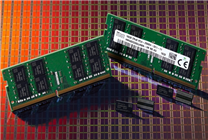The Rise of High-End Gaming Configurations: Understanding the Latest Trends
Summary:
- 32GB RAM Becomes Standard: A notable shift shows 32GB of RAM is now the preferred choice among gamers.
- Hard Drive Capacities on the Rise: Over half of gamers now have hard drives exceeding 1TB, influencing storage trends.
- Dominance of Windows 11: The majority of gamers are transitioning to Windows 11 as support for Windows 10 dwindles.
In the ever-evolving landscape of PC gaming, recent trends reveal a significant shift toward more robust hardware configurations. The latest survey data indicates that gamers are increasingly opting for enhanced specifications, most notably 32GB of memory, which has become the new standard for serious players.
Memory Trends
According to recent findings, the prevalence of 16GB memory configurations has seen a steady decline, dropping from 43.12% to 41.67% over just six months. In contrast, the proportion of users employing 32GB of RAM has risen from 32.85% to 35.42%. Analysts predict that this trend will lead to 32GB configurations surpassing their 16GB counterparts by the end of 2025. This shift can be attributed to several factors, including an increasing number of gamers acquiring high-end hardware, the decreasing prices of DDR5 memory, and the demanding specifications required for AAA gaming titles.
Storage Capacities
The demand for larger storage solutions is also on the rise. Currently, 53.64% of gamers utilize hard drives with capacities exceeding 1TB, while the 750GB to 999GB range accounts for 21.77%. This trend highlights the necessity for ample storage as game sizes continue to expand, further prompting gamers to upgrade their systems.
Processor and Graphics Card Usage
The survey shows a commendable growth in CPU performance, with the number of core CPU users reaching 29.81%, marking a new high. Among graphics cards, the RTX 4060 dominates the market with a 4.66% share. This trend signals a growing interest in more powerful graphics capabilities, essential for a superior gaming experience.
Display Resolutions
When it comes to display resolution, 1920×1080 remains the most prevalent among gamers, commanding a share of 54.44%. The 2560×1440 resolution ranks second at 20.19%, while 3840×2160, commonly referred to as 4K, lags far behind at just 4.59%. This data suggests that while high-resolution displays are becoming popular, 1080p is still the go-to choice for most gamers, likely due to its balance of performance and visual quality.
Operating System Preferences
As for operating systems, the transition toward Windows 11 is evident, with over 60% of gamers now using this latest version. The diminishing support for Windows 10—currently held by 35% of users—underscores the need for gamers to upgrade to newer software versions to enhance compatibility and performance.
Conclusion
The current gaming hardware landscape is marked by a clear shift toward more powerful and efficient setups. With the increasing adoption of configurations featuring 32GB RAM, significant storage capacities, advanced CPUs, and the latest operating systems, it’s evident that gamers are not just seeking to play the latest titles but are also investing in optimal performance. As technology continues to advance, it will be fascinating to watch how these trends evolve, further enhancing the gaming experience for enthusiasts around the world.
This ongoing evolution in gaming standards emphasizes the importance of keeping hardware updated, allowing gamers to fully immerse themselves in the increasingly sophisticated environments of modern video games.






